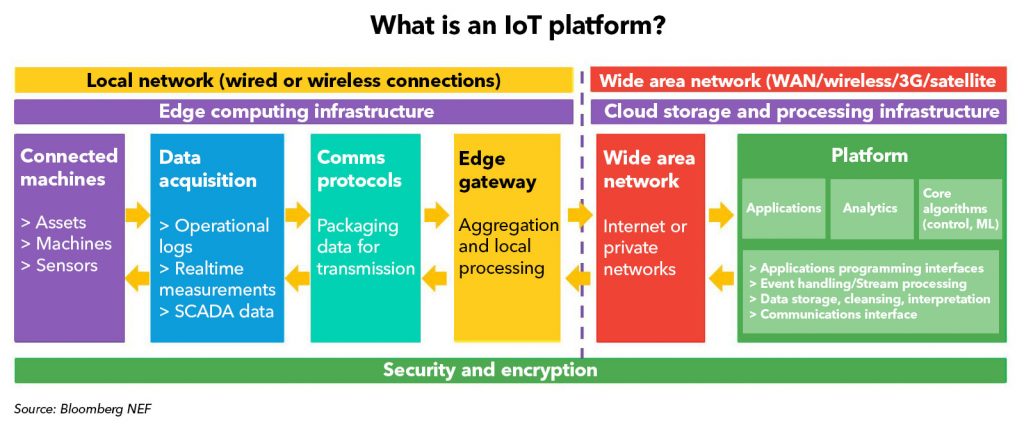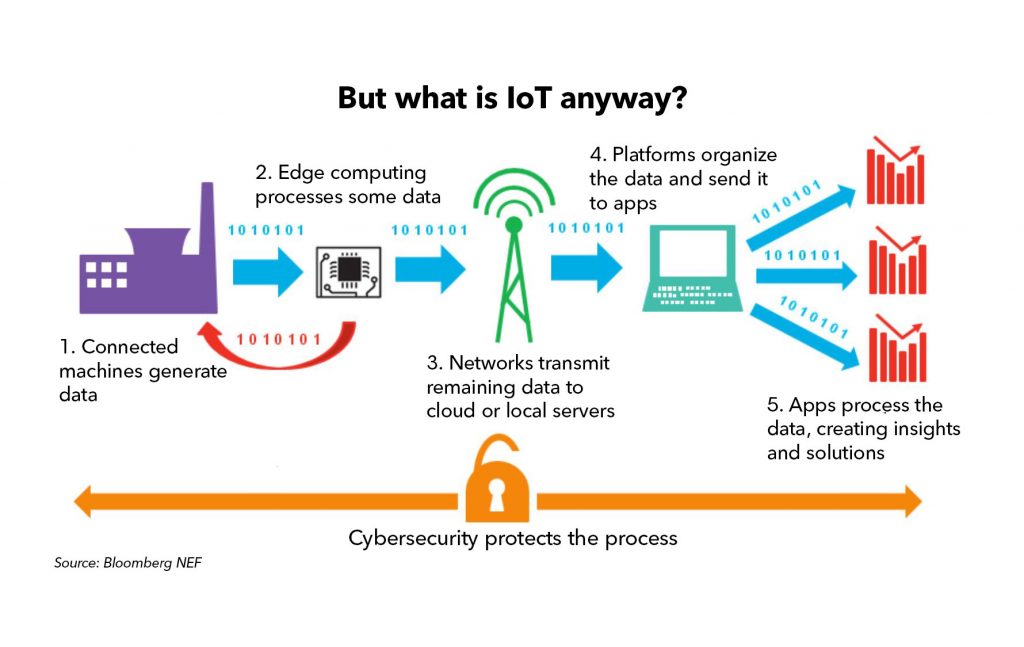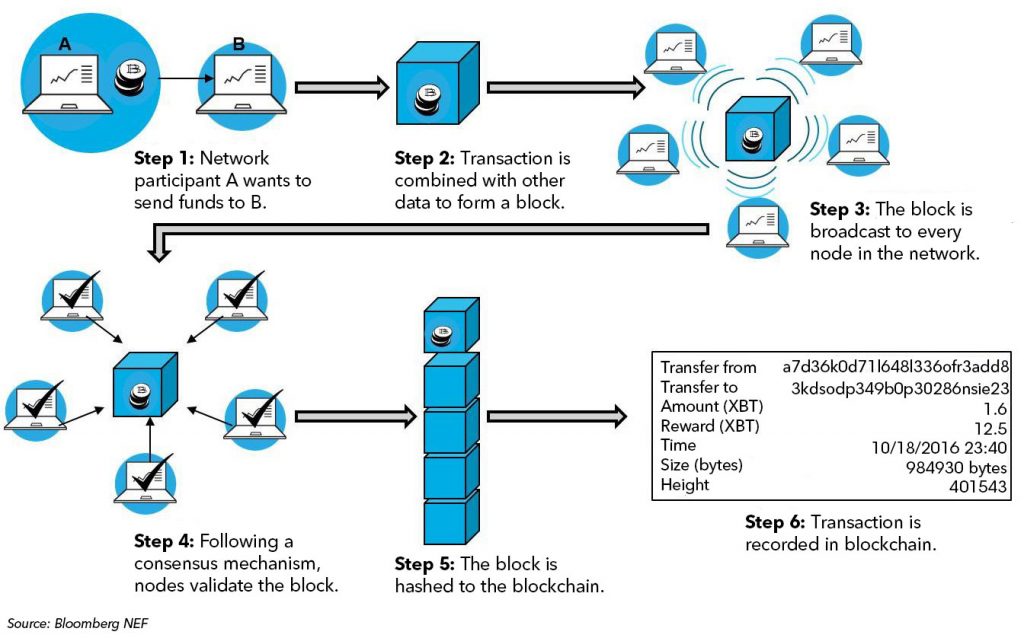By Claire Curry
Head of Emerging Technology
BloombergNEF
Trends in technology have the potential to disrupt and radically transform industries. These developments fuel a push toward innovation and force companies to move quickly to avoid complacency. The energy industry provides an excellent example, with established utilities and new energy start-ups alike looking for ways to leverage new forms of technology.
From investment in cloud computing to the advancement of blockchain, there are opportunities and lessons to be learned and applied across industries, using energy as a blueprint.
The IoT: Data Collection & Organization
Why it’s trending: Data collection by sensors in connected devices, working in tandem with new machine-to-machine communications networks, has the potential to radically streamline existing workflow structures. Improved acquisition, new methods of data integration, and advanced analytics offer numerous possibilities to rethink, streamline and improve.
In the energy space: Data is a commodity, particularly in energy. Companies across the industry are using thermal imaging and sensors to collect data, organize and place it on IoT platforms. When in place, data is valuable in supporting analytics — ultimately cutting costs and improving efficiency.
Further implications: Seamless data connection and analysis allow companies to use machine learning and artificial intelligence. This means asset operators can take predictive measures, preemptively solving problems before they arise. For example, being able to anticipate and schedule maintenance and repairs leads to fewer failures and less downtime.
Cloud computing
Why it’s trending: When information is stored in the cloud, companies can cut down on infrastructure and centralize important data. By using less hardware, cost of ownership declines and businesses benefit from no longer needing to manage their own data centers.
In the energy space: When utilities can limit their need for on-premise hardware, they’re able to harness greater processing power and more advanced analytics, ultimately evolving their business and becoming more cost-effective.
However, industrials need to trust new cybersecurity methods for protecting machine data before they move wholesale to the cloud.
Further implications: Cloud computing brings connectivity, scalability, and mobility to a variety of businesses. Investing in the cloud allows a move to a more dynamic business model, and most digital IoT platforms rely on the cloud. However, nascent edge-computing techniques may be set to disrupt cloud computing’s dominance.
Learn more about technology trends in the energy sector, how machine learning & AI are impacting investment strategy, mining value from big data and more in the Tech. Decoded. report.
Blockchain
Why it’s trending: Aside from Bitcoin and the rise of cryptocurrencies, blockchain has other valuable applications. The use of digital ledgers allows for secure processing of real-time transactions and automated trading.
In the energy space: The digital ledgers that make up blockchains will make trading in energy more liquid, as well as enabling developers to raise capital for projects. Blockchain could be instrumental in developing peer-to-peer electricity sales.
Further implications: Customers are more concerned about data security than ever, and, given the decentralized nature of blockchain, it could be how corporates and consumers get comfortable with sharing their private data for use in large AI algorithm development.


